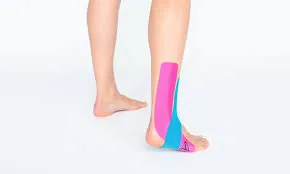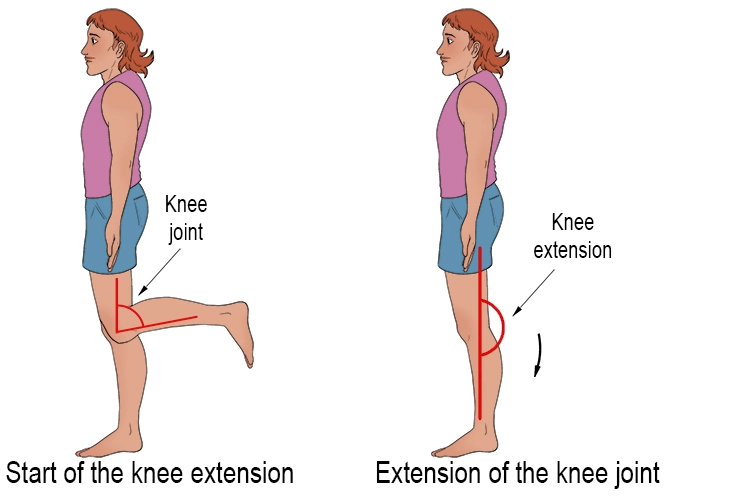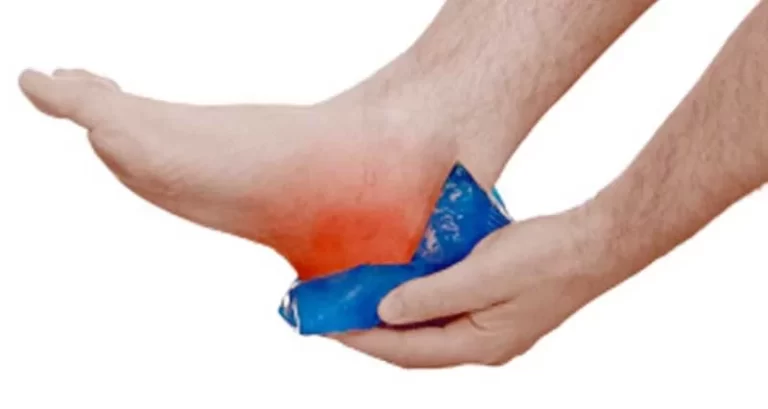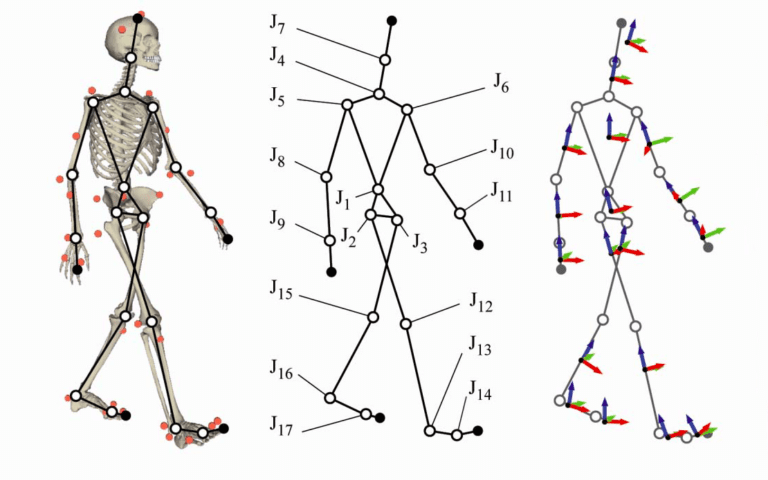Kinesiotapping for De-Quervain Disease :
Table of Contents
Why KT Tape is required in De-Quervain Disease?
Kinesiotapping for De-Quervain Disease is a rehabilitative cum protective use of stretchable kinesiological tapes to provide reduction
- reduction of pain
- enhancing performance
- preventing injuries
- support to the joint
- repositioning of structure
- facial and ligamentous correction
- It facilitate the healing process while providing full ROM with support to the joints suppotive structure as well as mobilization effects.
De Quervain’s disease is a disorder that is characterized by pain, tenderness, swelling and edema over the radial side of the wrist.it is very painful when thumb move.it cause due to constriction of 1st extensor compartment.
Anatomy :
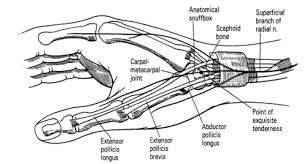
- In de Quervain tenosynovitis, the first dorsal compartment is thickened, raising the skin and creating a prominence at the radial styloid.
- The Finkelstein test draws the tendons of the first dorsal compartment distally and causes sharp, local pain when tendon entrapment has occurred and inflammation is present.
- de Quervain’s tenosynovitis is caused by inflammation and swelling of the tendons of the abductor pollicis longus and extensor pollicis brevis tendons at the level of the radial styloid process.The extensor pollicis brevis tendon is typically much smaller than even a single slip of the abductor pollicis longus tendon, and it may be congenitally absent.
Introduction of de quervain disease
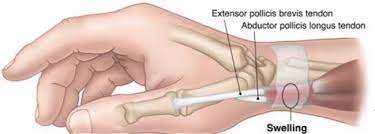
- De Quervain’s tenosynovitis is inflammation of the tendons within the first extensor compartment of the wrist, resulting in wrist pain and swelling.
- It is most common in women between the ages of 30-50, especially in those with occupations or hobbies involving repetitive movements of the wrist.
- It is very common ailment of the hand and caused due to constriction of 1st extensor compartment.
Causes :
- repetative thumb motion.
- Chronic overuse of your wrist
- Direct injury to your wrist or tendon
- Inflammatory arthritis, such as rheumatoid arthritis
- scar tissue can restrict movement of the tendons
- lifting your baby
Clinical features :
Patients with De Quervain’s tenosynovitis will often complain of pain near the base of the thumb with an associated swelling (secondary to thickening of the tendon sheath).Movements involving grasping or pinching are particularly painful and difficult.
On examination, there will be swelling and palpable thickening over the tendon group fibrous sheath. Finkelstein’s test is often positive.
following are the most common symptoms are seen in DQ :
- Pain near the base of your thumb
- Swelling near the base of your thumb
- Difficulty moving your thumb and wrist when you’re doing something that involves grasping or pinching
- A “sticking” or “stop-and-go” sensation in your thumb when moving it
- Pinching, grasping and other movements of your thumb and wrist aggravate the pain.
Kinesio tapping for de quervain disease:
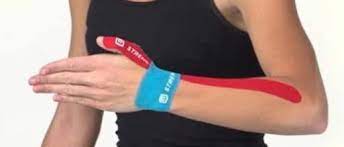
Kinesiology tape for your de quervain disease of thumb may be one option that your physical therapist uses to treat your condition .
Kinesiology taping, also known as K-tape, is a treatment that can be used to decrease your pain, inhibit muscle spasm, or facilitate the correct muscle contraction of your elbow and wrist muscles.
Application of KT :

We used three type I pieces of Kinesio tape for treatment, which is made in Korea. First of all, we curved all borders of tapes to prevent early separation of the tap.
The first strip (1-inch wide and 6-inches long) was used to unload from APL( abductor pollicis longus) and EPB (extensor pollicis brevis ) tendons. The tape was placed on the insertion of EPB, the base of the thumb, and was stretched by approximately 70% over the original length applied along the radial aspect of the wrist and up on to the extensor surface, ending at the midforearm (origin of APL).
The second and the third type I strips with 2-inches width and 4-inches length have correction roles.
The second one is named “function correcting” tape, with the wrist extended, putting the end of the tape at the dorsum of the hand and
another end at the distal forearm, 1 inch upper than styloids. Then by flexing the wrist, the tape was fixed. The third tape which is called “space correcting”, originates from the volar side of distal of radius and stretched obliquely to the dorsum of the hand with a lighter tension which is shown at 50% . Then we fixed them with a light massage and suggested not to use water for 6 hour in this area All the taping was applied by the physiotherapist fully trained in KT . These procedures of taping repeated for four times weekly.
How to remove KT :
- So now you’ve got your tape on and you’ve gotten that extra support during your chosen sporting activity, it’s time to take it off,
- so let us ease the process of removing kinesiology tape for you
- The best tip we can offer when it comes to removing your kinesiology tape is to peel the skin from the tape, not the tape from the skin.
- But in terms of the actual process, firstly make sure you’re removing the tape in the same direction as the growth of the hair underneath it,and whatever you do don’t rip the tape off like a plaster!
- Start slowly, folding the corners of the edge back gradually, ensuring that you’re laying the removed tape on the back of the applied tape,
- as opposed to pulling the tape above and away from your arm.
- As you’re peeling off the tape, hold your skin down with your other hand and either tap it or pull it gently in the opposite direction of the tape.
- This helps the skin and the tape to separate more efficiently but with no discomfort.
- If the tape has been applied over a particularly hairy part of the body, it helps to press down on the tape as you are peeling it off, as the pressure helps avoid further pain.
- It’s wise to have shaved the area before applying the tape but, as this isn’t always practical, taking this precaution will be necessary to some.Need a little extra assistance? Apply oil directly onto the tape,rub it in and wait around 10 to 20 minutes before removing it slowly.
- This will help reduce the stickiness of the tape and make it easier to remove



